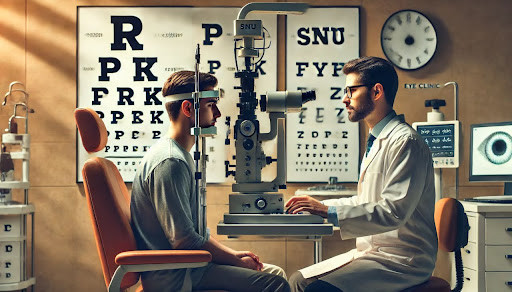Your eyes are not only the windows to your soul—they’re also crucial for navigating the world around you. While many eye conditions develop gradually, some signs should never be ignored. Prompt attention from snu eye clinic ophthalmologist—a medical doctor who specializes in eye and vision care—can prevent irreversible vision loss or detect systemic health issues.

Below are the top 7 signs that you should see an ophthalmologist immediately.
1. Sudden Vision Loss
One of the most alarming symptoms is a sudden loss of vision in one or both eyes. This may appear as a complete blackout, partial dimming, or blurry patches. Temporary or permanent, any rapid vision change can signal serious conditions such as:
- Retinal detachment
- Stroke
- Optic neuritis
- Acute glaucoma
Even if the vision returns, it’s crucial to be evaluated by an ophthalmologist immediately. Delay could result in permanent damage or missed diagnosis of a systemic condition like multiple sclerosis or vascular disease.
2. Eye Pain or Pressure
Persistent or severe eye pain is not normal and warrants immediate medical attention. It could be due to:
- Acute angle-closure glaucoma (a medical emergency)
- Corneal abrasions or ulcers
- Infections such as uveitis or keratitis
- Foreign bodies or trauma
Glaucoma-related pain is often accompanied by nausea, headache, or vomiting. If you experience intense discomfort along with other symptoms, don’t wait—seek emergency care.
3. Flashes, Floaters, or a Shadow in Your Vision
Occasional floaters (tiny specks or threads drifting across your vision) are usually harmless. However, a sudden increase in floaters, bright flashes of light, or a shadow or curtain moving over your visual field could indicate a retinal detachment—a serious condition requiring immediate surgery to prevent blindness.
These symptoms are especially concerning in people over 50, those who are nearsighted, or individuals who have had eye trauma or surgery.
4. Redness with Vision Changes or Discharge
Red eyes can result from allergies or minor irritation, but if redness is accompanied by:
- Blurry vision
- Light sensitivity
- Discharge (especially yellow or green)
- Pain
…it could indicate conjunctivitis, corneal infections, iritis, or even herpes simplex eye disease. Some of these conditions can progress quickly and lead to permanent vision loss if untreated.
5. Double Vision (Diplopia)
Seeing two images of a single object—horizontally, vertically, or diagonally—can be disorienting and dangerous. Double vision may signal:
- Eye muscle paralysis
- Nerve damage
- Brain tumor or aneurysm
- Stroke
Because the cause may originate in the brain or nervous system, an ophthalmologist (often in coordination with a neurologist) must be consulted urgently to determine the cause and start treatment.
6. Eye Trauma or Foreign Object
Any injury to the eye, even if it seems minor, should be evaluated immediately. This includes:
- Blunt force trauma
- Cuts or punctures
- Chemical splashes
- Embedded foreign objects (e.g., metal, wood, glass)
Never try to remove a foreign object yourself. Cover the eye lightly without pressure and go to an emergency room or ophthalmologist right away. Some injuries can lead to internal bleeding, retinal detachment, or infections that threaten sight.
7. Sudden Sensitivity to Light (Photophobia)
An abnormal sensitivity to light—especially if it develops suddenly and is accompanied by pain, redness, or vision changes—can be a symptom of:
- Uveitis (inflammation of the middle layer of the eye)
- Corneal abrasions or ulcers
- Migraine with aura
- Meningitis (in rare cases)
Photophobia may range from discomfort in bright lights to an inability to open the eyes outdoors. This warrants an urgent eye examination to rule out underlying inflammation or infection.
Don’t Wait—Your Vision Depends on It
Many eye conditions are treatable, especially if caught early. However, the longer you wait, the higher the risk of complications or permanent damage. If you experience any of the above symptoms, do not attempt to self-diagnose or wait for symptoms to improve on their own. A comprehensive eye exam by an ophthalmologist is essential.
Additionally, certain populations—like people with diabetes, hypertension, or a family history of glaucoma or macular degeneration—should have regular eye checkups even without symptoms. But when symptoms do appear, especially sudden or severe ones, time is critical.
Final Thoughts
Your eyes play a vital role in your daily life, and their health should never be taken for granted. The “wait and see” approach doesn’t apply when it comes to vision. Any sudden change, pain, or abnormal symptom could be a red flag for a more serious issue—one that only a trained ophthalmologist can properly diagnose and treat.
If you’re experiencing any of the seven warning signs above, contact an eye care professional immediately. It could mean the difference between full recovery and irreversible vision loss.

